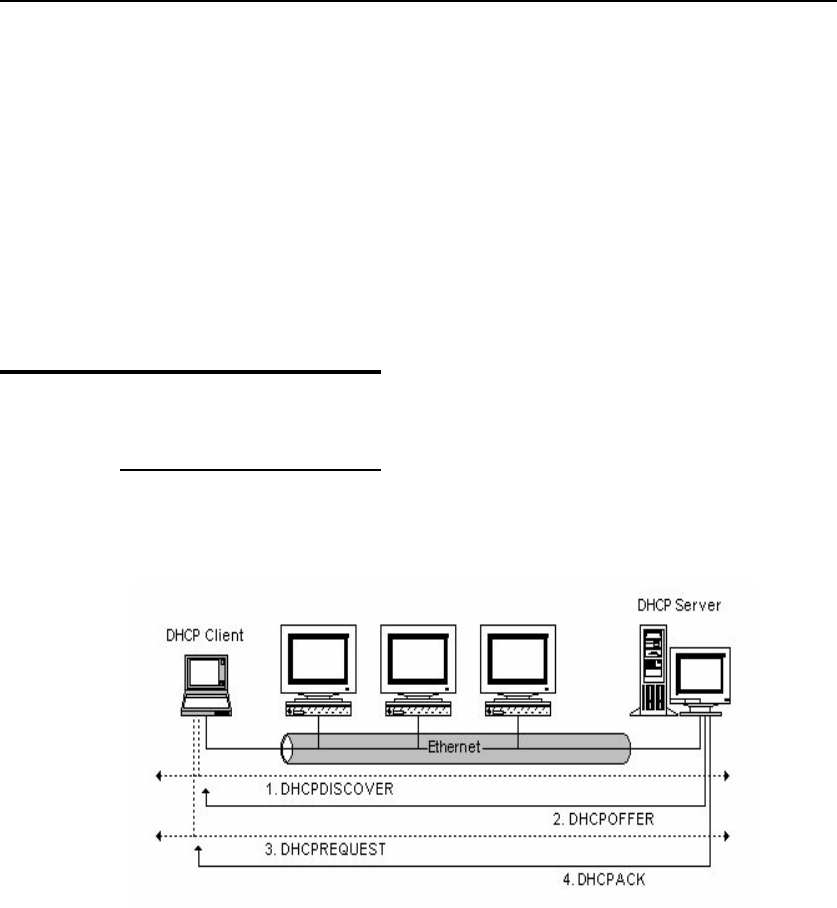
DES-7200 Configuration Guide Chapter 9 DHCP Snooping Configuration
9-1
9 DHCP Snooping
Configuration
9.1 Overview
9.1.1 Understanding
DHCP
The DHCP protocol is widely used to dynamically allocate the recycled network resources, for
example, IP address. A typical IP acquisition process using DHCP is shown below:
The DHCP Client sends a DHCP DISCOVER broadcast packet to the DHCP Server. The
Client will send the DHCP DISCOVER again if it does not receive a response from the server
within a specified time.
After the DHCP Server receives the DHCP DISCOVER packet, it allocates resources to the
Client, for example, IP address according to the appropriate policy, and sends the DHCP
OFFER packet.
After receiving the DHCP OFFER packet, the DHCP Client sends a DHCP REQUEST packet
to obtain the server lease and notify other servers of receiving the address allocated by the
server.
After receiving the DHCP REQUEST packet, the server verifies whether the resources are
available. If so, it sends a DHCP ACK packet. If not, it sends a DHCP NAK packet. Upon
receiving the DHCP ACK packet, the DHCP Client starts to use the resources assigned by the
server in condition that the ARP verification resources are available. If it receives the DHCP
NAK packet, the DHCP Client will send the DHCP DISCOVER packet again.


















